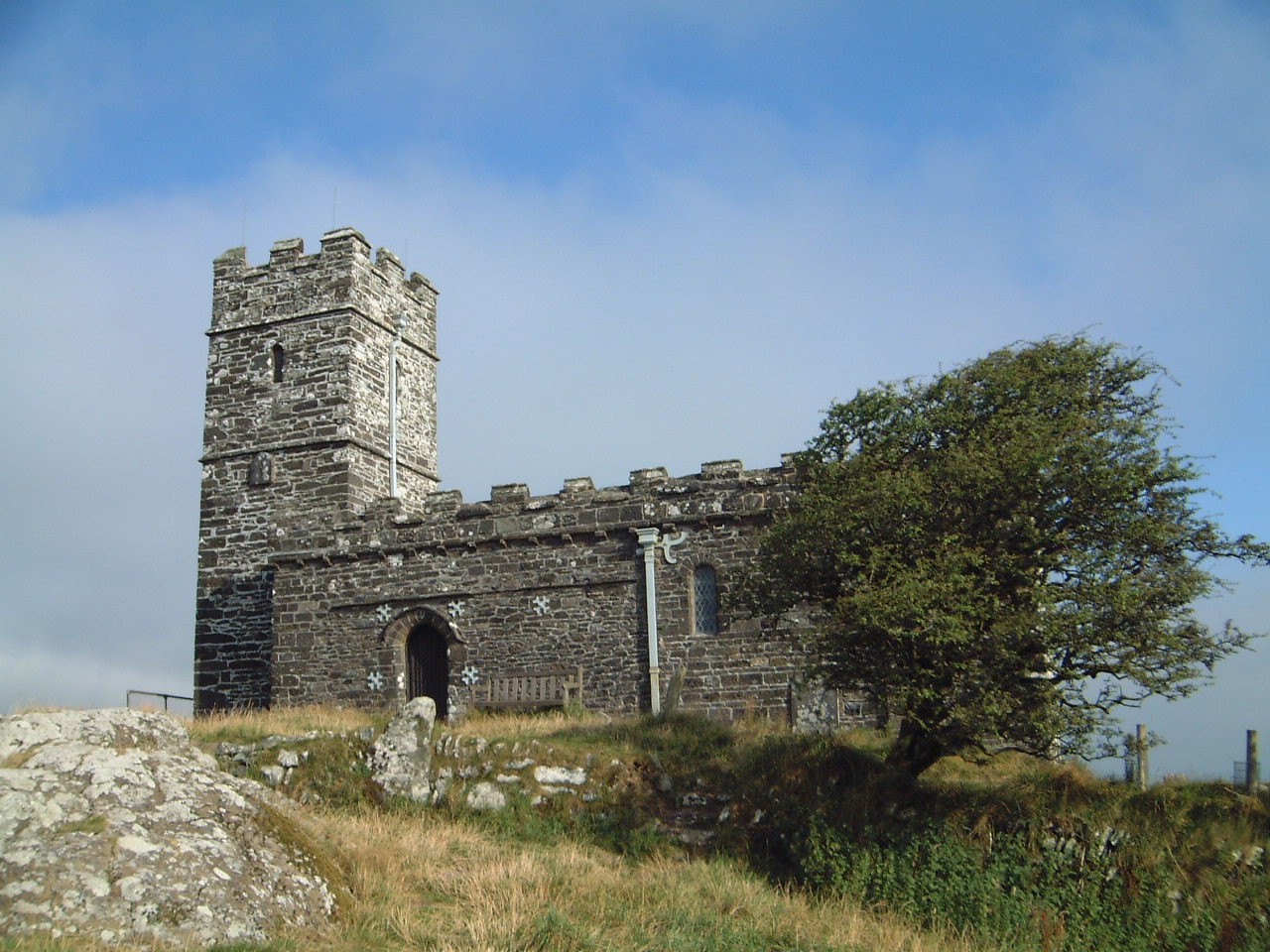Brent Tor on:
[Wikipedia]
[Google]
[Amazon]
Brent Tor is a tor on the western edge of
 The Church of St Michel de Rupe (" Saint Michael of the Rock") atop the Tor dates to the 13th century, and measures wide and long. The tower is high and houses five bells. At one point, the Church may have been used as a
The Church of St Michel de Rupe (" Saint Michael of the Rock") atop the Tor dates to the 13th century, and measures wide and long. The tower is high and houses five bells. At one point, the Church may have been used as a
Dartmoor
Dartmoor is an upland area in southern Devon, England. The moorland and surrounding land has been protected by National Park status since 1951. Dartmoor National Park covers .
The granite which forms the uplands dates from the Carboniferous ...
, approximately four miles (6.5 km) north of Tavistock, rising to 1100 ft (330m) above sea level. The Tor is surmounted by the Church of St Michael, the parish church of the village of Brentor, which lies below the Tor.
Geology
Brent Tor is an unusual example of early Carboniferousbasaltic
Basalt (; ) is an aphanitic (fine-grained) extrusive igneous rock formed from the rapid cooling of low-viscosity lava rich in magnesium and iron (mafic lava) exposed at or very near the surface of a rocky planet or moon. More than 90% ...
volcanic rock
Volcanic rock (often shortened to volcanics in scientific contexts) is a rock formed from lava erupted from a volcano. In other words, it differs from other igneous rock by being of volcanic origin. Like all rock types, the concept of volcan ...
s, now weathered down. It is composed of volcanic breccia
Breccia () is a rock composed of large angular broken fragments of minerals or rocks cemented together by a fine-grained matrix.
The word has its origins in the Italian language, in which it means "rubble". A breccia may have a variety of d ...
and pillow lava exuded beneath a former sea.
History
Around the Tor areIron Age
The Iron Age is the final epoch of the three-age division of the prehistory and protohistory of humanity. It was preceded by the Stone Age (Paleolithic, Mesolithic, Neolithic) and the Bronze Age (Chalcolithic). The concept has been mostly appl ...
earthworks, the remnants of a Hill fort
A hillfort is a type of earthwork used as a fortified refuge or defended settlement, located to exploit a rise in elevation for defensive advantage. They are typically European and of the Bronze Age or Iron Age. Some were used in the post- ...
. Unusually, the fortifications are at the base of the Tor, rather than the summit as is more normal (compare with Brent Knoll in Somerset
( en, All The People of Somerset)
, locator_map =
, coordinates =
, region = South West England
, established_date = Ancient
, established_by =
, preceded_by =
, origin =
, lord_lieutenant_office =Lord Lieutenant of Somerset
, lor ...
). No serious archaeological work has been carried out on the site. However, the northern ramparts in particular are well preserved, displaying a multi-vallate pattern characteristic of the Iron-A, or early -B, culture. There are three distinct consecutive ramparts in this sector, and traces of internal partitioning.
 The Church of St Michel de Rupe (" Saint Michael of the Rock") atop the Tor dates to the 13th century, and measures wide and long. The tower is high and houses five bells. At one point, the Church may have been used as a
The Church of St Michel de Rupe (" Saint Michael of the Rock") atop the Tor dates to the 13th century, and measures wide and long. The tower is high and houses five bells. At one point, the Church may have been used as a Beacon
A beacon is an intentionally conspicuous device designed to attract attention to a specific location. A common example is the lighthouse, which draws attention to a fixed point that can be used to navigate around obstacles or into port. More mode ...
tower, used to spread word of enemies seen out to sea (see also Spanish Armada
The Spanish Armada (a.k.a. the Enterprise of England, es, Grande y Felicísima Armada, links=no, lit=Great and Most Fortunate Navy) was a Spanish fleet that sailed from Lisbon in late May 1588, commanded by the Duke of Medina Sidonia, an a ...
). It is also said that the church was to be built at the bottom of the tor, but the devil who didn't want to see its construction would move the construction to the top of the hill each night to stop its construction. Dissuaded by the devil, the locals continued with its construction in defiance.
The Church has a capacity of approximately forty people. Although there is a newer (19th century) church (Christchurch) in the village, which is used for many services, St Michael's is still used on Christmas Day, Easter Day and for Evensong during the summer. In 1995 the Church was struck by lightning, which caused extensive damage, but this has since been repaired.
Legends
There are many legends surrounding Brent Tor. One of the best-known is that of the ''Merchant and the Storm''. According to this story, an earlymedieval
In the history of Europe, the Middle Ages or medieval period lasted approximately from the late 5th to the late 15th centuries, similar to the post-classical period of global history. It began with the fall of the Western Roman Empire a ...
merchant paid for the church to be completed after nearly being shipwrecked.
The churchyard was used as a location in filming the ITV version of '' Jamaica Inn''.Williams, Michael (1984) Unknown Devon. St Teath: Bossiney Books; pp. 16-18
References